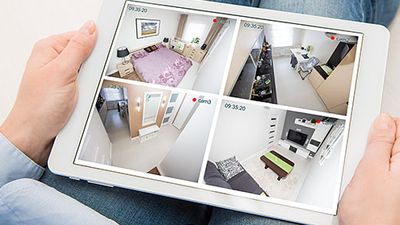Installing an alarm system is a crucial step in safeguarding your home or business from potential intrusions, fire hazards, and other emergencies. The process, while comprehensive, can be effectively managed with careful planning and attention to detail, ensuring that the installed system offers robust protection tailored to your specific needs. The first phase in alarm system installation involves assessing the unique requirements of your property. This assessment includes identifying entry points such as doors and windows, and understanding the layout of your space to determine the optimal placement of sensors and detectors. It is also essential to consider potential environmental factors that might affect sensor performance, like drafts, pets, or heavy machinery. Once the assessment is complete, selecting the right type of alarm system is the next critical step. Alarm systems come in various forms, from basic setups with door and window sensors to advanced systems featuring motion detectors, glass break sensors, smoke and carbon monoxide detectors, and surveillance cameras. Choosing a system with a control panel that can be easily accessed and operated by all household members or employees is crucial.

Modern systems often integrate with smartphones, providing remote monitoring and control capabilities, adding a layer of convenience and security. The installation begins with placing the control panel in a central, yet discreet location. It should be easily accessible but hidden from potential intruders to prevent tampering. The sensors and detectors must be installed at strategic points, ensuring they cover all vulnerable areas. Door and window sensors are typically placed on the frames, while motion detectors are positioned in corners of rooms or hallways to maximize coverage. It is important to follow the manufacturer’s instructions during installation to ensure each component functions correctly. Wiring is a critical aspect of the installation process. For hardwired systems, running the cables through walls and ceilings might require professional assistance to avoid damaging the property. Wireless systems offer an easier installation process, but it is essential to ensure that the wireless signals are strong and not prone to interference. Testing the system thoroughly after installation is vital to confirm its effectiveness. This involves checking each sensor and detector to ensure they are correctly positioned and responsive.
The alarm should trigger when a breach occurs, and notifications should be promptly sent to the designated contacts or monitoring service. Pace Protections Alarm Company in San Antonio Regular maintenance checks are recommended to keep the system in optimal working condition. Batteries in wireless components should be replaced periodically, and any software updates should be installed to maintain security features. Integrating your alarm system with other smart home devices can enhance your security setup. Smart locks, lights, and surveillance cameras can work in tandem with the alarm system to provide a comprehensive security solution. For businesses, integrating with access control systems can add another layer of protection by regulating who can enter different parts of the building. In conclusion, the effective installation of an alarm system is a multi-step process that demands careful planning, precise execution, and regular maintenance. By investing time in understanding your property’s specific needs and choosing the right system, you can significantly enhance the security of your home or business, providing peace of mind and protection against various threats.